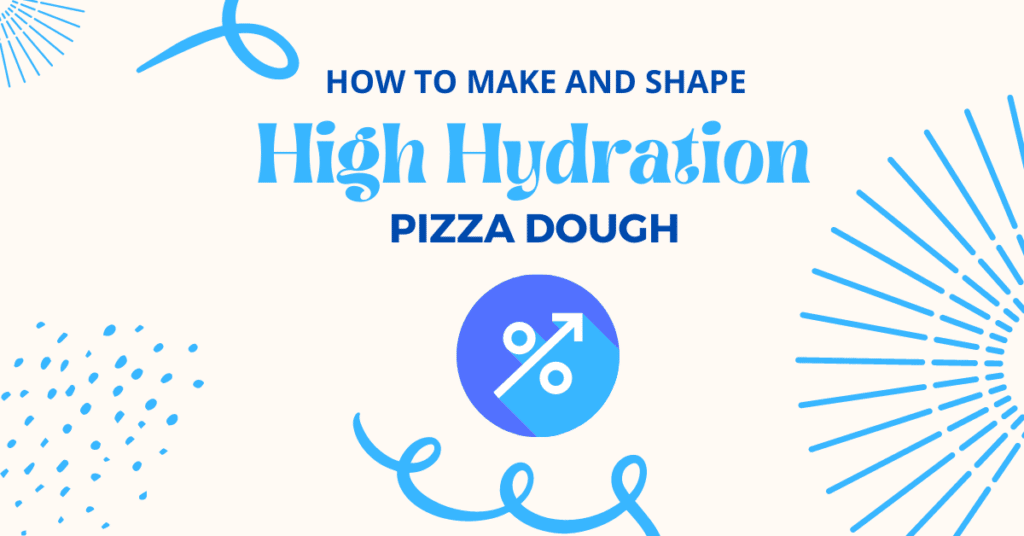Are you looking for a delicious, crunchy high hydration pizza dough recipe?
This type of dough is very popular among pizza lovers worldwide, and it’s easy to see why. Not only does it have a great flavor, but it also has an amazing texture that makes it ideal for pizzas with thin and crispy crusts.
With these tips, you’ll be able to make delicious high-hydration pizza dough every time.
So let’s get started!
Here’s What You Will Find:
What is meant by pizza dough hydration?
Hydrated pizza dough represents the ratio of water to flour and its proportional proportion. The hydration of pizza dough is 65% when they contain 1000 grams of flour and 650 grams of liquid.
Hydration affects a pizza crust’s surface properties, including its elasticity and sticky consistency.
Too little water and the crust gets dense and dry, and too much water will cause sticky and watery dough. There’s a sweet spot for hydrating pizza. The proper use of water can improve oven springs, porous structures, and crispy crusts.
What is High-Hydration Pizza Dough?
High-hydration pizza dough is a type of pizza dough that has a high water-to-flour ratio, usually around 70-80%. This results in a dough that is soft, stretchy, and wetter than traditional pizza dough, which typically has a ratio of around 65%.
Because of its high hydration, the dough requires a longer fermentation time and a gentler shaping process, but the end result is a lighter, airier, and more flavorful crust with a chewy texture.
High-hydration pizza dough is popular among artisan pizzerias and home pizza makers looking for a unique and authentic pizza experience.
If you want to know the hydration level of your recipe, you can use our online pizza dough hydration calculator.
If you’re looking for a high hydration pizza dough, there are a few things to keep in mind.
To start, your water-to-flour ratio should aim for 70-80% hydration; meaning that the amount of water should equal 70-80% of the total weight of flour used.
This will create an elastic and easy-to-work-with dough. Additionally, use lukewarm water during preparation to ensure that more gluten develops in the dough as it is kneaded.
Finally, take your time mixing everything together – about 10 minutes or so – since this will help create an even texture throughout the entire crust.
This is a very wet dough; as a result, you will need a dough scraper to manage it. This wetter dough rises faster and higher. The result is a crust with larger air pockets, better pizza crust texture, and puffier.
Characteristics of High Hydration Pizza Dough
These pizza doughs will have the highest amount of elasticity and springiness. Because the water percentage is much higher, up to 80%, the dough will be very sticky.
This characteristic allows the yeast to rise faster, and the bubbles within the flour will be larger.
Handling this type of dough often requires a scraping tool to form individual pizza balls that may be kneaded and proofed further for a more delicate texture.
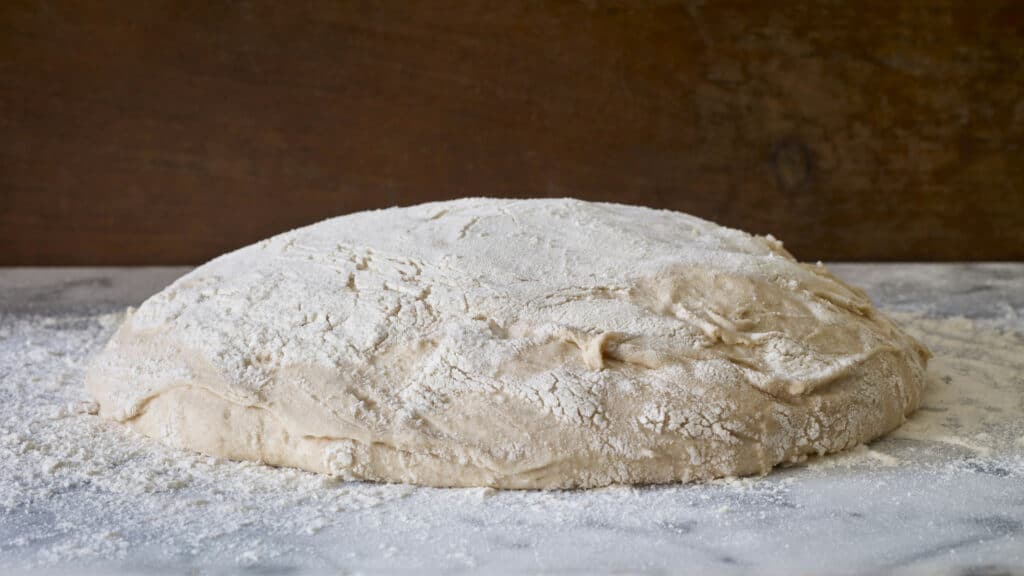
Working with higher hydration dough requires more skill to handle and shape.
Because high hydration dough is so sticky, it must be dusted liberally with flour to keep it from sticking to anything. When it’s baked, the crust will be crispier and thinner.
As a beginner pizza maker, it’s best to start working with lower-hydration doughs and then increase the hydration gradually as you gain experience handling doughs.
But why bother if it’s more difficult?
Because it might be worth it!
Benefits of High-Hydration Pizza Dough
Here are some of the ways your pizza dough can benefit if you increase the pizza dough hydration level percentage for your pizza dough recipe:
Texture
As you increase your pizza dough’s hydration level, the texture will be softer and have a more open crumb (i.e., bigger holes inside the crust). More hydration means a crispier crust when baked.
Crust
In lower hydration recipes, the crust tends to be quite thick and hard, but a higher hydration dough has a thinner crust that stays crispy for longer. The crust is moist, chewy, and flavorful.
Flavor
Higher-hydration pizza doughs have a more developed flavor, whereas lower hydration gives a more pronounced sourness. Long, slow fermentation develops the flavor of the crust.
The higher the dough’s hydration, the less likely it is to rise because it is a lot slacker.
Versatile and can be flavored in many different ways.
Appearance
Considering the above, most people find it worth learning to work with higher-hydration dough. You get a better-tasting pizza with a thinner, crispier crust and a softer textured, more open crumb.
Storage and freezing of the dough
Any unused dough can be stored in the refrigerator for up to a week or frozen for up to 3 months. To freeze, wrap the dough tightly in plastic wrap and place it in a freezer-safe bag. Defrost the dough in the refrigerator overnight before shaping and baking.
High-Hydration Dough vs. Low-Hydration Dough
The difference between low-hydration and high-hydration pizza dough comes down to the amount of water in the ingredients, particularly flour.
High-hydration dough contains more water, typically around 60-80% of the ingredients. This results in a dough that is very wet and sticky, making it difficult to handle and shape.
The high water content in high-hydration dough creates a tender, airy crust with large bubbles and a chewy texture.
On the other hand, the low-hydration dough contains a lower amount of water, typically around 45-60% of the total ingredients. This results in a dough that is less sticky and easier to handle, with a denser, chewier texture. The lower water content also results in a crispier crust.
The choice between low-hydration and high-hydration dough comes down to personal preference. High-hydration dough is great for those who love a tender, airy crust, while low-hydration dough is an excellent option for those who prefer a crispy, crunchy crust.
Ingredients and Equipment Needed
Flour
The type of flour used in high-hydration pizza dough is important, as it affects the texture and flavor of the crust. Bread flour or all-purpose flour can be used, but high-protein flour, such as 00 flour or a mixture of all-purpose and bread flour, will produce the best results.
Water
Water helps combine the ingredients into a cohesive ball but not too much—you’re aiming for about 75% hydration.
The high hydration of the dough requires a large amount of water, which is mixed with flour, salt, and yeast to form the dough. It’s important to use filtered or bottled water for the best flavor, as tap water can contain minerals or other substances that can affect the dough.
Water will determine your ability to handle the dough and the overall texture of your pizza. Since your dough has yeast that activates your flour, the water percentage will create various flavors and consistencies.
The role of water goes even further. Water lets these ingredients disperse across the pizza dough when pouring in yeast, sugar, and salt.
These additional ingredients also dissolve in your dough, thanks to water.
Arguably, the most significant water duty in pizza dough is it allows for gluten strands development.
Gluten, a wheat protein, is a binder for your pizza ingredients. Without water, your pizza will lack texture. You also have a denser dough since gas bubbles can escape during fermentation.
Active Dry Yeast
Yeast is also necessary to give the dough its lightness and rise; active dry yeast works perfectly here.
Yeast is the leavening agent in high-hydration pizza dough and creates air pockets in the crust. Fresh or dry yeast can be used, but it’s important to follow the manufacturer’s instructions for activation and proofing.
Salt
You’ll need salt, too; we always recommend fine grain, as it is easier to dissolve.
Salt is added to the dough to enhance flavor and control yeast activity. It’s usually added in a ratio of around 2% of the weight of the flour.
Equipment needed
To make high-hydration pizza dough, you will need the following:
Kitchen scale is also helpful for precise measurements
Large mixing bowl
Wooden spoon
If you are using a stand mixer, a dough hook
Plastic wrap
Baking stone or steel
Proofing box
High-Hydration Pizza Dough Recipe
High-hydration pizza dough can be intimidating for first-time bakers, but it doesn’t have to be!
All you need is the right combination of ingredients and a little patience.
The high-hydration dough requires more liquid than standard dough, making it easier to shape and creating extra flavor.
The dough should be soft, pliable, and have a good flavor. High-hydration pizza dough, also known as wet dough, has several benefits compared to traditional dough or low-hydration pizza dough.
High-hydration pizza dough can produce better-flavored pizzas due to its higher water content, enabling more gluten development. This dough produces a lighter and airier crust with great texture and chewiness, making it easier to stretch out before topping the pizza with your favorite ingredients.
Additionally, high-hydration pizza dough can last up to five days in the refrigerator compared to two days for low-hydration pizza dough, which allows for convenience when making multiple pies for large group gatherings or parties.
You’ll need four basic ingredients: flour, water, salt, and yeast. The key to success lies in nailing down the correct ratio of each ingredient.
Ingredients:
- 500g pizza or bread flour
- 375g water
- 5g active dry yeast
- 10g salt
- Toppings of your choice (pepperoni, mushrooms, green peppers, onions, etc.)
Mixing of High Hydration Pizza Dough
The mixing process for the high-hydration dough is an important part of successful baking. When making high-hydration dough, it is important to understand the process and what ingredients are needed.
The mixing process for high-hydration dough involves understanding the different techniques used when combining ingredients.
The appropriate bowl to use when mixing high-hydration dough is on the larger side, so there is enough space for adequate movement. This helps to create an even texture throughout the dough without forming pockets of dry yeast or flour.
Using the correct bowl and correctly mixing the dough greatly affects how the final product will turn out. Metal bowls can affect the dough’s temperature; wood bowls might be slightly difficult to clean, while glass bowls are the best because you can see through the glass if a bit of dough is not fully combined.
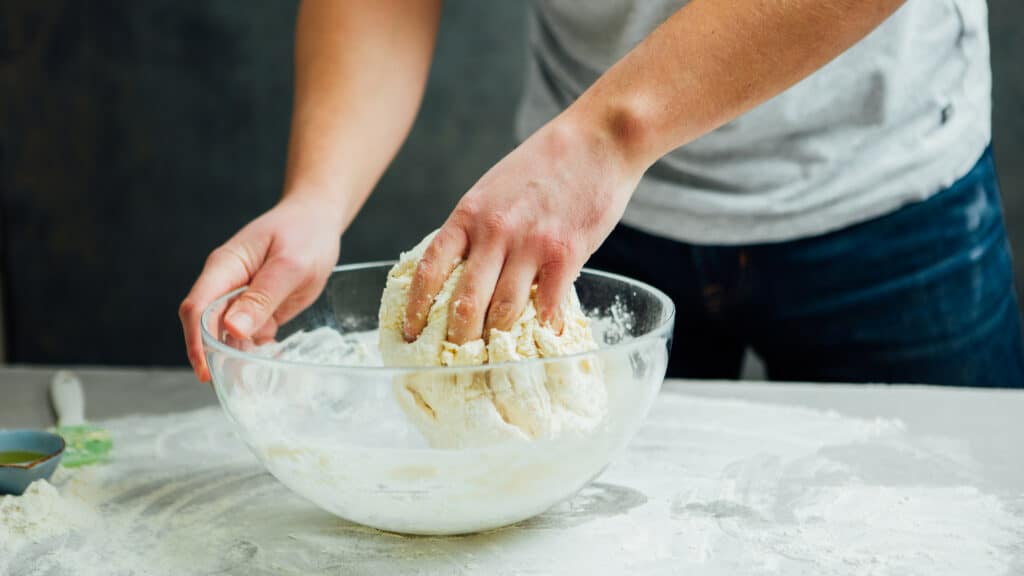
Mixing high-hydration doughs should be done slowly and with care to ensure that all ingredients are properly incorporated.
Proper temperature and humidity play a major role in dough-making, as it helps activate the yeast and provides enough moisture for gluten development.
Small water content and flour absorption adjustments can also help create the final product’s desired texture. With these factors in mind, one should measure all ingredients accurately to ensure consistency throughout the process.
After properly weighing out each ingredient, it is time to combine them into a cohesive mass with either a stand mixer or a wooden spoon.
Depending on the mixer you are using, it can take 10 to 15 minutes before your dough has reached its optimal consistency and texture. Be sure not to overmix, as this could lead to a tough end product.
- Start by weighing out the flour and water. It’s important to use a kitchen scale for accuracy, as high-hydration pizza dough requires precise measurements.
- Mix flour, salt, and yeast in a large mixing bowl. Make a well in the center of the mixture and pour in the water.
- Using a wooden spoon or dough hook, slowly mix the ingredients until a shaggy dough forms. You may need to use your hands to bring the dough together fully.
- Knead the dough on a floured surface for 5-10 minutes until it is smooth and elastic.
- Place the dough in a clean, oiled bowl and cover it with plastic wrap. Let it rest in a warm, draft-free area for 2 hours or until it has doubled in size.
And that’s it! You’ve now mixed up a beautiful batch of high-hydration pizza dough. It’s ready for the next step: fermentation.
Fermentation
This is where the magic happens!
The dough will undergo a long, slow fermentation, during which the yeast will work to create air pockets and develop the crust’s flavor. After 2 hours of rest, the dough can be transferred to a proofing box for the final fermentation. Place it in the refrigerator overnight for the best results or at least 8 hours.
Shaping the Dough
Shaping and baking high-hydration pizza dough can be tricky as it requires specific techniques and tools. High-hydration pizza dough is thinner than regular or low-hydration dough, so you need to work quickly with your hands, spatula, and rolling pin to shape the thin crust in an even circle.
It’s best not to use too much flour when shaping for maximum flavor and texture. Once shaped, place your pizza onto a pre-heated stone or tray. Bake at high temperature (500 degrees Fahrenheit) until golden brown – this typically takes around 10 minutes, depending on how thin you have rolled out the dough.
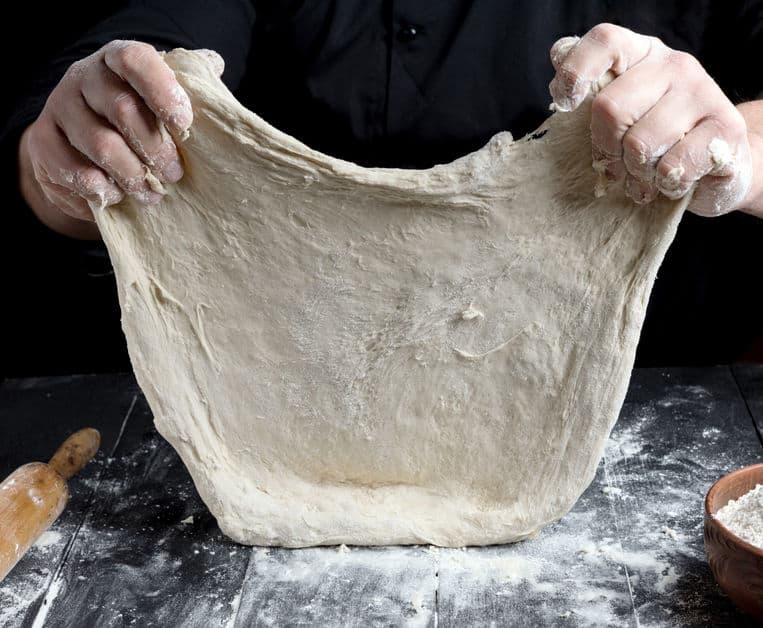
Before shaping the dough, dust a pizza peel or baking sheet with cornmeal, gently remove the dough from the proofing box, and place it on the peel.
Using your fingers, gently stretch the dough into a circular shape, taking care not to tear it. You can also use a rolling pin to help shape the dough, but be gentle and avoid overworking it.
Pre-baking and Toppings
Once the dough is shaped, it’s time to add the toppings of your choice. High-hydration pizza dough is more delicate than traditional dough, so be careful not to overload it with too many toppings. It’s best to keep it simple and let the flavor of the crust shine through.
Baking the pizza
Add your favorite toppings and place the pizza on a pre-heated baking stone or steel in a 500°F (260°C) oven for 10-15 minutes or until and bake until the crust is golden brown and the cheese is melted and bubbly. The high heat and long bake time will produce a crispy crust and perfectly melted toppings.
Tips and Tricks
Making high-hydration pizza dough can be a fun and rewarding experience, but there are a few tips and tricks that can help you achieve the best results. With these tips and tricks, you’ll be well on your way to making the perfect high-hydration pizza dough. Let’s go over the following:
Control temperature and humidity
To ensure that your yeast is active and your dough ferments properly, it’s important to maintain the right temperature and humidity. A warm, draft-free area is ideal, such as a closed oven with a bowl of hot water. If your kitchen is too cool, you can place the dough in a proofing box or covered plastic container to maintain the proper environment.
Use a Baking Stone or Steel
Achieving a crispy crust is all about heat and steam. To get the best results, preheat your oven and baking stone or steel to 500°F (260°C) for at least an hour before baking. The high heat will quickly evaporate the moisture from the dough and create a crisp, chewy crust. You can also try scoring the dough with a knife or razor blade before baking to allow steam to escape.
Variations and flavor additions
High-hydration pizza dough is versatile and can be flavored in many different ways. Try adding herbs, spices, or cheese to the dough before shaping, or experiment with different types of flour for a unique flavor. The options are endless!
FAQs
Does Water Make a Difference in Pizza Dough?
Every pizza dough recipe calls for water. Water is the second most important ingredient after flour; it allows your pizza dough to develop the right consistency.
It also gives the dough’s yeast the perfect environment to ferment and reproduce.
What is the best hydration for Neapolitan pizza dough?
Choosing hydration depends largely upon various variables, especially the use of the flour. Generally, 55% – 60% Hydrated pizza dough should suit Neapolitan dough.
Are higher-hydration pizza doughs better?
Increased hydration is good for dough and increases elasticity. High hydration creates an extremely light texture. Pizza’s thick crust requires strength. Hence water consumption is reduced. However, the crust has less moisture and air because pizza is cooked higher at high temperatures. It increases the strength of springs in ovens. The spring on ovens is what makes the dough rise during baking.
The Last Slice
Making high-hydration pizza dough is a great way to add flavor and texture to your homemade pizza. It produces a delicious crust, and the extra kneading makes for an enjoyable baking experience.
High-hydration pizza dough is worth trying out whether you’re a beginner or an expert in the kitchen. But be warned – you may never return to regular pizza dough after tasting this amazing creation! Plus, you can freeze it for future use!
Whether you’re an experienced pizza maker or just starting out, give high-hydration pizza dough a try! You can make restaurant-quality pizzas at home with the right ingredients and a little practice.

Best Water for Pizza Dough: Temperature, Quality, and Hydration
the PROs
In this article, we are going to dive deep into the mysterious ways of water. In conjunction with flour, yeast, and salt, it can make the most spectacular pizza dough.
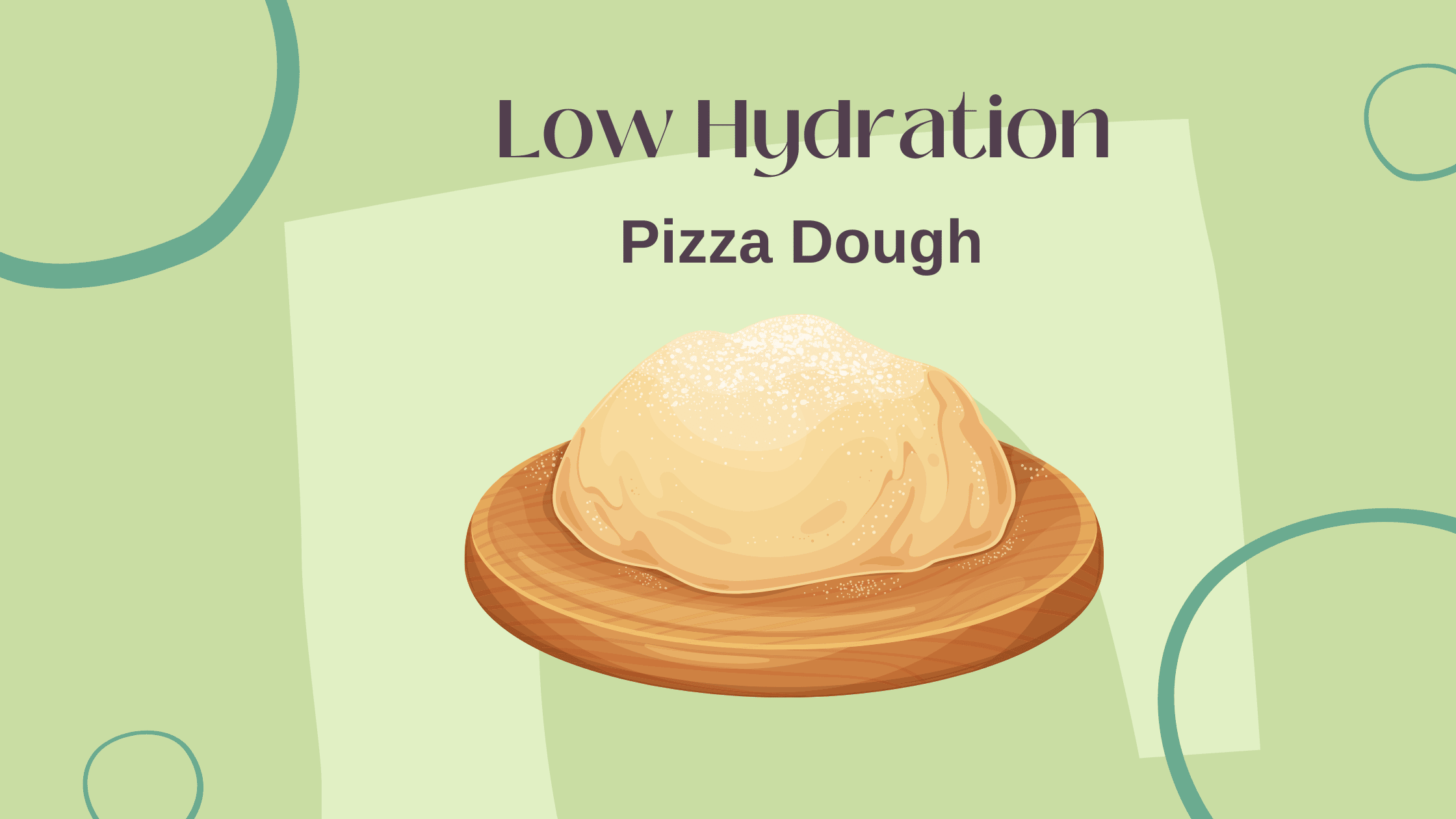
Low Hydration Pizza Dough: No More Soggy Pizza!
the PROs
Are you wondering what low-hydration pizza dough is? A pizza dough’s hydration is one of the most important factors when …
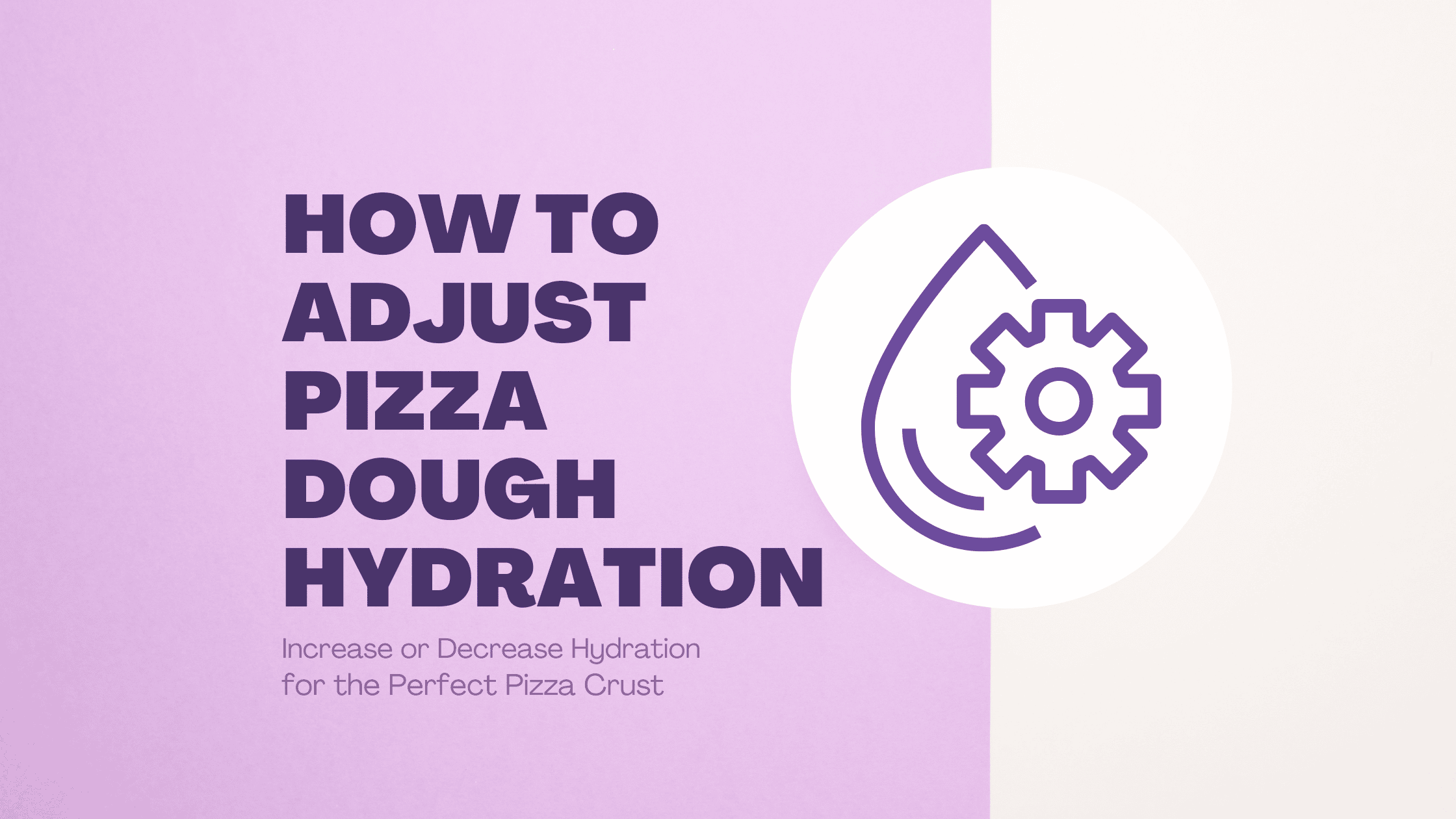
How to Adjust Pizza Dough Hydration Levels for a Perfect Crust
the PROs
How to Adjust Pizza Dough Hydration Making good pizza dough is an art form and one of the most important …

Flour Absorption 101: The Key to Crafting the Perfect Pizza Crust
the PROs
Ah, pizza. The one food that unites us all! What would we do without our delicious, cheesy slices of heaven? …
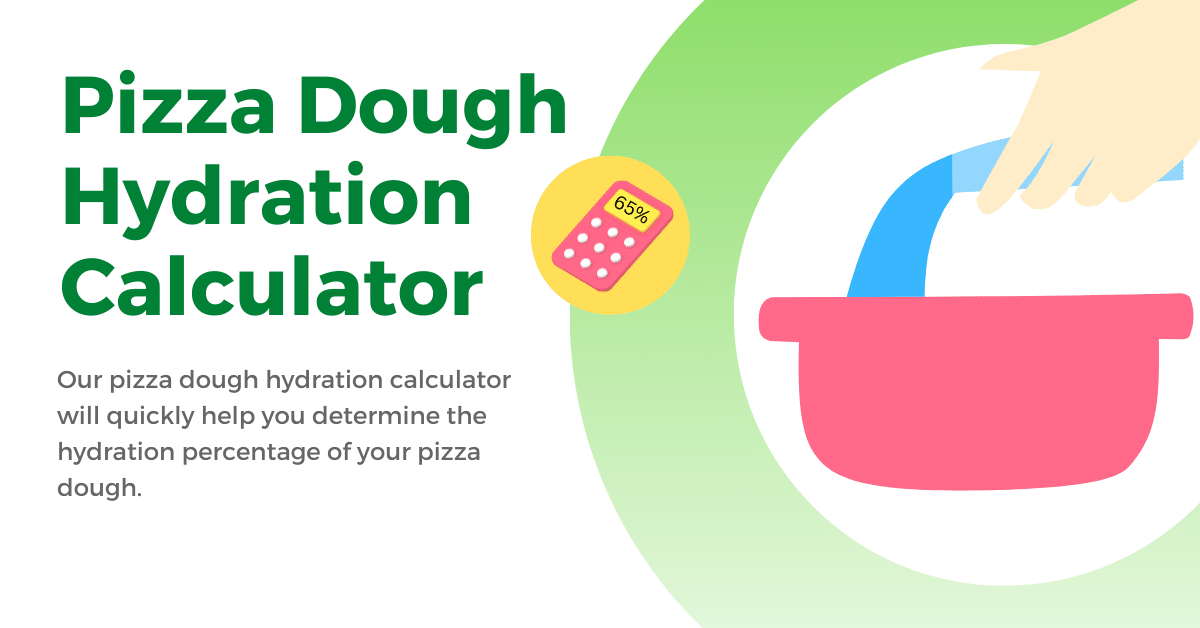
Pizza Dough Hydration Calculator
the PROs
Making the perfect pizza dough can be difficult, especially for novice bakers. But with the right tools, anyone can master …

7 Hydration Percentages by Pizza Style that Actually Make the Best Pizza
the PROs
Making a pizza is all about getting your pizza dough to have just the right amount of hydration. If you’re looking to get the best results this guide can help you find the specific pizza dough hydration according to your desired pizza style. Let’s check it out!
Enjoy!
Not a PRO? Not a Problem!
Take a pizza class to bring your pizza skills to the next level,
so you can be a PRO!
Related Posts

Costco Pizza Delivery: Find How You Can Get It Now!
the PROs
People go to Costco’s food court for many different reasons, but the cheesy slice of pizza they serve is among …

Pizza for Beginners: Don’t Buy Pizza, Make It! Here’s How to Get Started!
the PROs
You have this idea that you want to make pizza at home as opposed to ordering it, but where do you start? Don’t worry! Here you will find answers and directions to all your questions.

Pizza Toppings Under Cheese or Over Cheese? [Why the Order Matters]
the PROs
Is Pizza Cheese on Top or Bottom? Hey pizza lovers, are you wondering if you should layer pizza toppings under …
Newsletter
Subscribe to our Recipe of the Week newsletter and receive our partners’ latest recipes, tips, and discount offers.
Keep in Touch!
